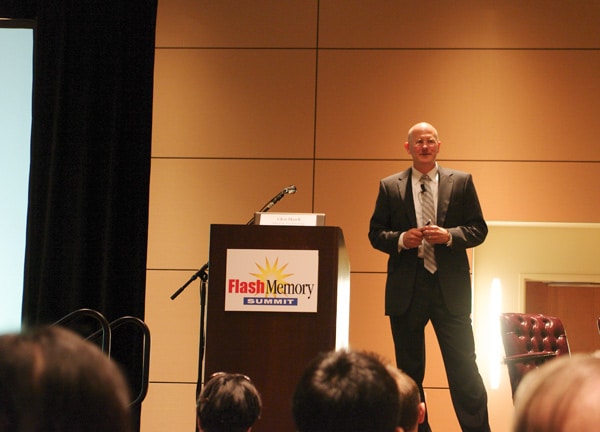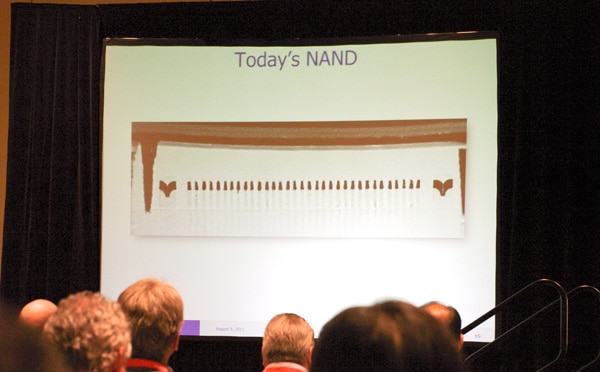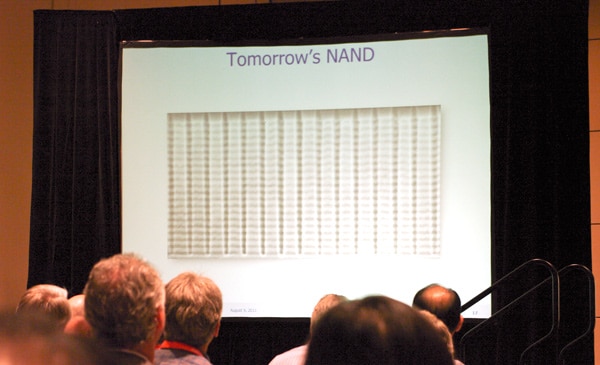 At Flash Media Summit 2011, flash memory is an exciting topic on the mind of all visitors. Near the center of this market, Micron sits with a heavy influence in components ranging from the NAND itself to complete end-user products like the RealSSD m4/C400 SSD. Even as adoption rates are increasing faster than ever, one thing on the mind of most manufacturers is what’s next? For Micron, 3D NAND is the next big thing.
At Flash Media Summit 2011, flash memory is an exciting topic on the mind of all visitors. Near the center of this market, Micron sits with a heavy influence in components ranging from the NAND itself to complete end-user products like the RealSSD m4/C400 SSD. Even as adoption rates are increasing faster than ever, one thing on the mind of most manufacturers is what’s next? For Micron, 3D NAND is the next big thing.
At Flash Media Summit 2011, flash memory is an exciting topic on the mind of all visitors. Near the center of this market, Micron sits with a heavy influence in components ranging from the NAND itself to complete end-user products like the RealSSD m4/C400 SSD. Even as adoption rates are increasing faster than ever, one thing on the mind of most manufacturers is what’s next? For Micron, 3D NAND is the next big thing.
In the past year Micron has seen a large increase in their consumer product division, jumping from 1% to a whopping 10% market penetration no part in thanks heavy advertising of their new SSDs like the RealSSD m4. This drive also marked the first 25nm drive for Micron. Even as most retail shoppers are still coming to grips with the drop from 3x to 2xnm flash, Micron and others are looking at the next lithography shrinks and how they will handle the change.

As many quickly came to realize with the drop to 25nm flash, endurance is a strong concern as write cycles decrease with each shrink in NAND. The drop to the newly announced 20nm and 1xnm continue to push the limits, leaving many to consider what’s on the horizon. During Micron’s keynote presentation by Glen Hawk, Micron gave a glimpse of their upcoming 3D NAND, which puts more emphasis on stacking rather than just continuing to shrink the die size. The benefit to this is relaxing the restrictions on shrinking the process to increase density and instead working on multiple layers. The photos below showing off the difference between planar flash and 3D NAND kind of show the tightly packed layers in a prototype NAND cross-section.


While still a few years away, it does show where the market is heading and that NAND will still have a strong position in the storage market. Micron won’t say for certain (nor will others) when the new flash memory will be hitting the shelves, outside of the next few years when planar flash has hit its limits. The main thing consumers and enterprise clients should take away from this is NAND flash still has a life even after the die-shrinking limits of the silicon itself has been reached.
